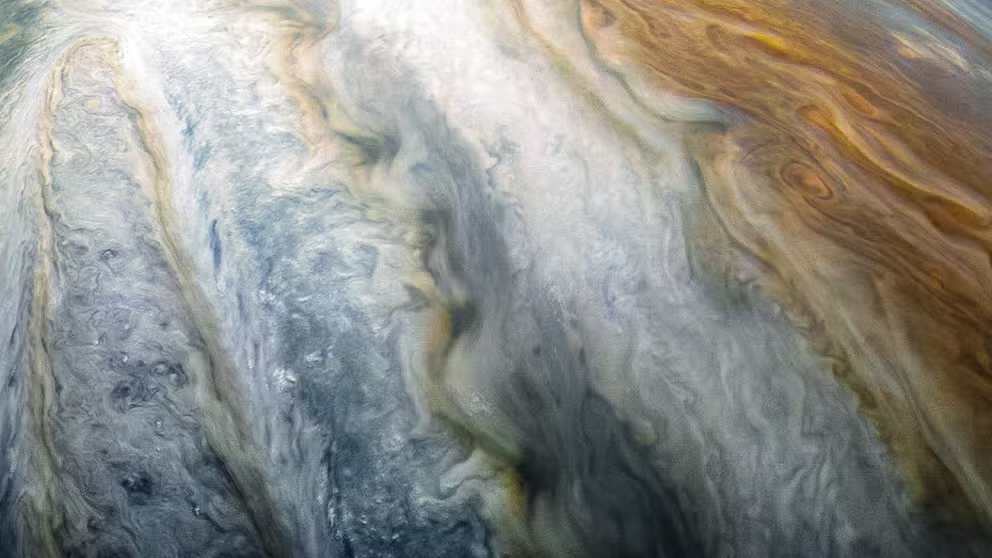5 NASA images that commemorate Juno's 50th orbit around Jupiter
Launched on Aug. 5, 2011, NASA’s Juno spacecraft entered orbit around Jupiter on July 4, 2016, becoming the agency’s most distant planetary orbiter.
See stunning photos of Jupiter taken by NASA's Juno orbiter
On July 4, 2016, the Juno spacecraft entered orbit around Jupiter. To celebrate its 50th orbit of the gas giant, NASA released 50 images taken by the spacecraft.
NASA has released 50 images to commemorate the 50th orbit of the Juno spacecraft around our solar system's largest planet.
Designed to complete only seven orbits around Jupiter, NASA’s Juno mission completed its 50th orbit around the gas giant April 8.
The Juno mission launched on Aug. 5, 2011, and then entered orbit around Jupiter on July 4, 2016, becoming the agency’s most distant planetary orbiter.
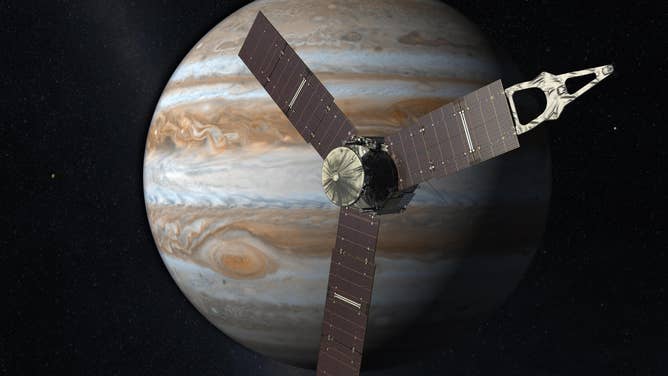
The Juno spacecraft.
(NASA / NASA)
In the nearly seven years since, instruments on Juno have collected data and captured incredible views of the gas giant, along with a number of its moons.
Here are five of the 50 images released to celebrate Juno’s 50th orbit.
Jovian tempest
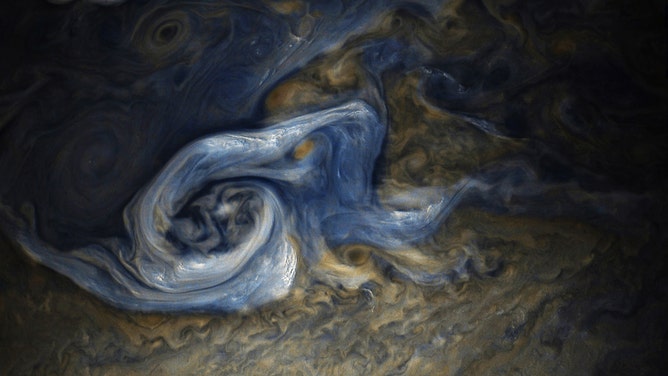
Tempest on Jupiter.
(ASA / JPL-Caltech / SwRI / MSSS / Gerald Eichstädt / Seán Doran / NASA)
An image taken on Oct. 24, 2017, shows a large storm brewing in Jupiter’s northern hemisphere.
According to NASA, the storm is rotating counter-clockwise with a wide range of cloud altitudes. The darker clouds are expected to be deep in the atmosphere, whereas the brighter clouds are at higher altitudes. Additionally, the bright clouds are thought to be updrafts of ammonia ice crystals, possibly mixed with water ice.
The Great Red Spot

The Great Red Spot on Jupiter.
(NASA / NASA)
Perhaps the most famous feature on Jupiter is the Great Red Spot, a storm measuring about 1.3 times the width of Earth and has existed for more than 350 years, according to NASA.
In an image taken on July 10, 2017, dark and light clouds are seen swirling within the red oval – the color of which still remains a mystery. NASA said the storm’s winds are estimated to peak at 400 mph, well beyond the wind speeds of Category 5 hurricanes on Earth.
A bouquet of cyclones
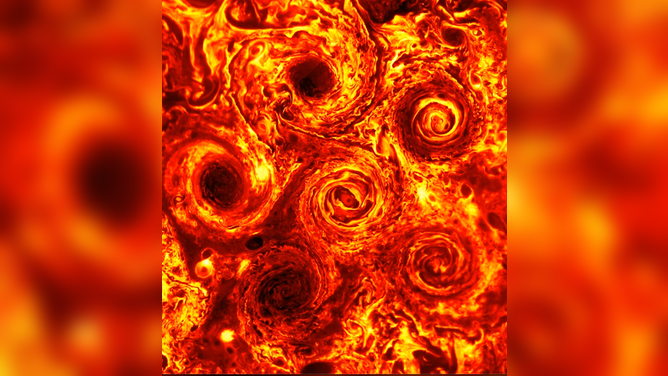
Cyclones on Jupiter.
(NASA / JPL-Caltech / SwRI / ASI / INAF / JIRAM / NASA)
Another image captures a collection of cyclones on Jupiter’s south pole.
Captured during the 22nd flyby of the Juno spacecraft, the image and data collected helped lead to the discovery of a new cyclone. The data also indicated wind speeds of the new cyclone at an average of 225 mph.
Ganymede
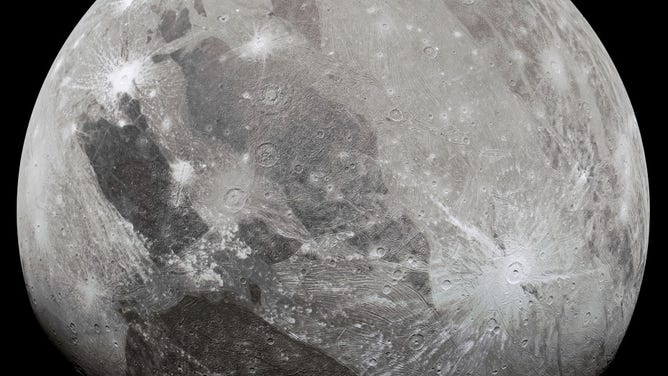
Ganymede.
(NASA / JPL-Caltech / SwRI / MSSS / Kevin M. Gill / NASA)
The Juno spacecraft also gave scientists a peek at the largest moon in the solar system, Ganymede. According to NASA, Ganymede is larger than Mercury and Pluto, and is three-quarters the size of Mars.
An image from the Juno spacecraft shows craters speckled across Ganymede's surface. Underneath its surface, scientists believe the moon may contain an underwater saltwater ocean.
Europa
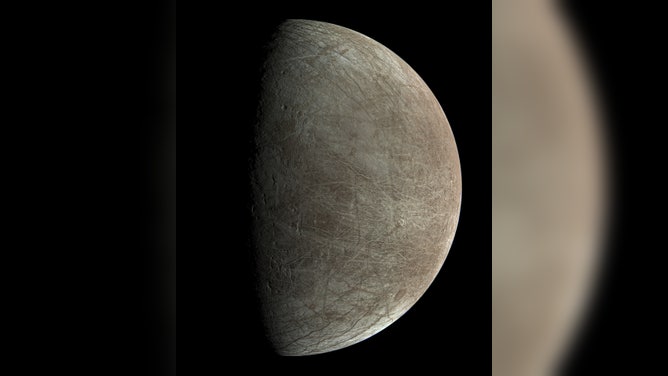
Europa.
(NASA / JPL-Caltech / SwRI / MSSS / Björn Jónsson / NASA)
According to NASA, Jupiter's icy moon Europa may be the most promising place in our solar system to find conditions suitable for life outside of Earth.
The Juno spacecraft provided a detailed look at the lines and crevices that are found on Europa. NASA said some of the features reveal the tectonic stresses the moon has endured over thousands of years.
To see the rest of NASA's 50 images from the Juno spacecraft, check out the Juno mission page.
